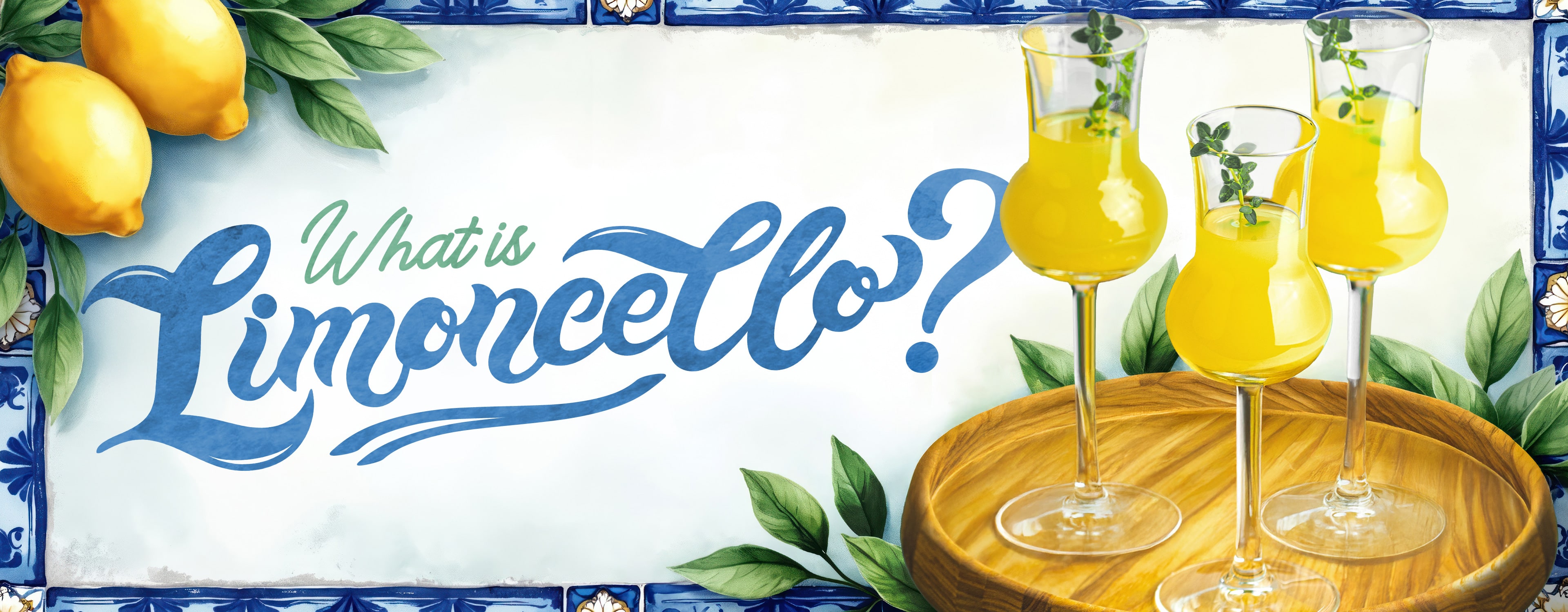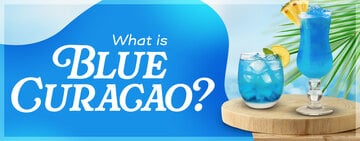Limoncello is a bright, citrusy liqueur that has been a staple in Italian culture for generations. Made from lemon peels, alcohol, water, and sugar, it delivers a refreshing balance of sweetness and tartness. Restaurants and bars often serve limoncello as a chilled digestif, use it in cocktails, or incorporate it into desserts. Understanding its origins, flavors, and uses can help foodservice professionals add a unique touch to their menus.
What Is Limoncello?

Limoncello is a bright, citrus-forward Italian liqueur known for its bold lemon flavor and smooth, slightly sweet finish. It originates from Southern Italy, particularly the Amalfi Coast and Sicily, where locals have been crafting it for generations. Made by steeping lemon peels in high-proof alcohol, limoncello captures the natural oils and essence of the fruit. After infusion, the mixture is combined with simple syrup to balance the tartness with sweetness, resulting in a refreshing, aromatic liqueur.
Limoncello is traditionally served chilled as an after-dinner digestif, often in small glasses to highlight its intense citrus notes. Beyond sipping, it adds bright lemon flavor to cocktails, desserts, and some savory dishes. Its versatility makes it a favorite ingredient for chefs and bartenders looking to enhance recipes with a burst of natural lemon essence.
Limoncello ABV
Limoncello is an alcoholic liqueur with a 25% to 35% ABV, depending on how long it's aged. Most limoncello is made with 80-proof vodka or other high-proof liquors.
For delicious summery mocktails, substitute limoncello syrup for limoncello liqueur.
What Does Limoncello Taste Like?

Limoncello has a bold, zesty lemon flavor with a perfect balance of sweetness and tartness. The infusion of lemon peels in alcohol extracts the fruit’s natural oils, creating an intense citrus aroma and a smooth, vibrant taste. Unlike sour lemon juice, limoncello offers a sweeter, more rounded citrus experience with a slight alcoholic warmth.
Though sweet, limoncello maintains a refreshing brightness that prevents it from becoming cloying. Its velvety texture and crisp finish make it a delightful after-dinner drink, especially when served ice-cold. The natural lemon essence also enhances cocktails, desserts, and sauces.
Does Limoncello Go Bad?
While limoncello's high alcohol content helps prevent spoilage, improper storage can dull its vibrant flavor. Limoncello has a long shelf life, especially if unopened and stored properly. Once opened, it maintains its best flavor for 6 months, though it remains safe to drink beyond that.
To preserve its bright citrus taste, store limoncello in the refrigerator. If limoncello develops an off smell, changes color, or forms sediment, it has lost its quality and should be discarded.
How to Make Limoncello
Making limoncello requires just a few ingredients: high-proof vodka (80 proof or higher), fresh lemon peels, water, and simple syrup or sugar. The process takes at least one to two weeks, allowing the lemon peels to infuse fully. For foodservice operators, producing limoncello in batches ensures consistent quality and availability.
- Peel lemons, avoiding the bitter white pith.
- Soak the peels in high-proof vodka for at least a week to extract flavor. The longer you let them soak, the more citrus flavor seeps into the drink.
- Strain the infusion and mix it with a simple syrup of sugar and water.
- Let the limoncello rest for a few days in the refrigerator before bottling and serving.
Limoncello Cocktails

Limoncello cocktails bring a refreshing burst of citrus to any drink menu. With its vibrant lemon flavor and smooth sweetness, limoncello pairs well with spirits and mixers for delicious summer drinks. Whether served as a light spritz or blended into a bold, tangy creation, these cocktails highlight limoncello’s versatility and bright character.
- Limoncello Spritz: This light and bubbly cocktail blends limoncello with prosecco and soda water for a crisp, refreshing drink. Garnish with a lemon slice and fresh mint to enhance its vibrant presentation. Try our elderflower limoncello spritz recipe for a sweet, tangy, and floral summer cocktail.
- Lemon Drop Martini: A zesty twist on a classic martini, this drink mixes limoncello, vodka, and fresh lemon juice for a tart yet sweet cocktail. Rim the glass with sugar for an extra touch of sweetness.
- Amalfi Mule: A citrusy take on the Moscow Mule, this cocktail combines limoncello, vodka, lime juice, and ginger beer for a tangy and slightly spicy drink. Serve it in a copper mug with a lemon wedge for the perfect finishing touch.
- Limoncello Collins: This refreshing cocktail is a variation of the Tom Collins, featuring limoncello, gin, lemon juice, and soda water. It’s a crisp, citrus-forward drink that’s perfect for warm weather.
- Italian Margarita: Limoncello adds a bright, citrusy depth to this take on a margarita. Mixing tequila, limoncello, triple sec, and lime juice creates a smooth, tangy cocktail best served over ice with a salted rim.
How to Drink Limoncello
Limoncello is best enjoyed straight and well-chilled. Use a small glass to highlight its vibrant lemon flavor and smooth, sweet finish. Sip it slowly to fully appreciate its refreshing citrus notes. Traditionally, limoncello is enjoyed as a digestif after meals, offering a bright and zesty end to any dining experience.
How to Serve Limoncello
Store limoncello in the freezer and pour it into chilled glasses for the best flavor and texture. The cold temperature enhances its smoothness and prevents it from tasting overly sweet. Serve after dinner in small portions, typically 1 to 2 ounces, to savor its refreshing qualities.
Limoncello’s versatility makes it a valuable addition to any beverage program. Whether served straight, mixed into cocktails, or infused into desserts, its bold lemon flavor enhances drink offerings. Proper storage and serving techniques ensure the best experience for customers. By mastering limoncello, foodservice operators can elevate their drink menus with a taste of Italy’s classic liqueur.








